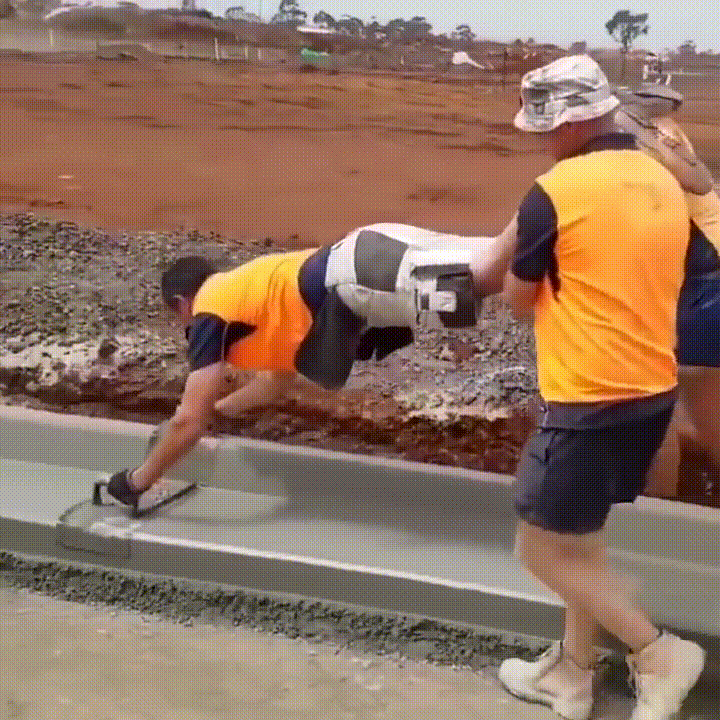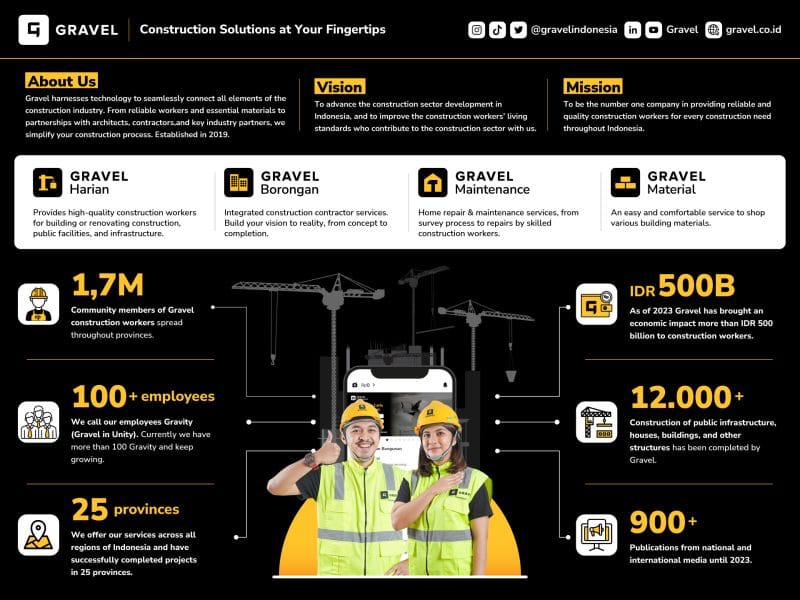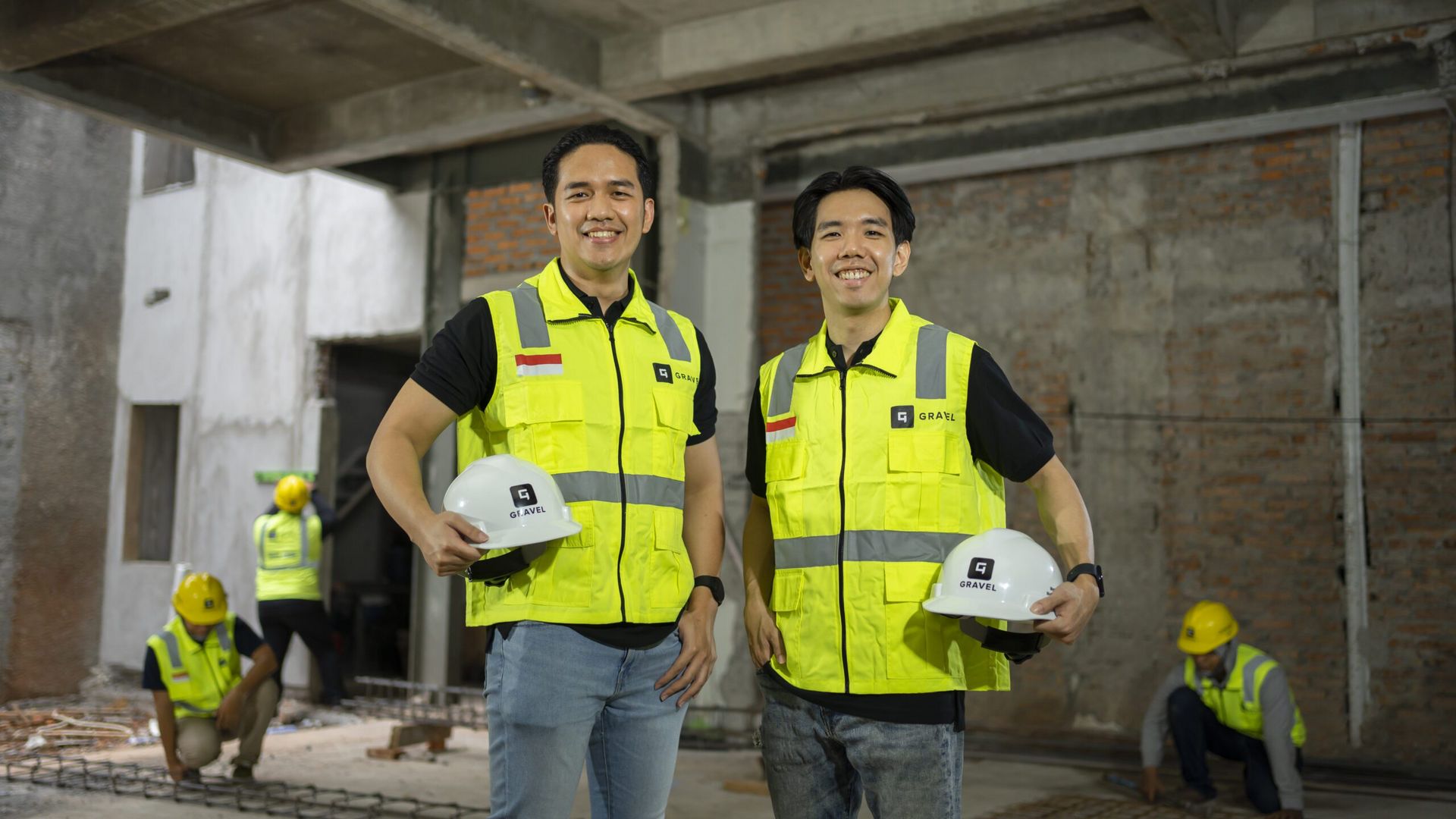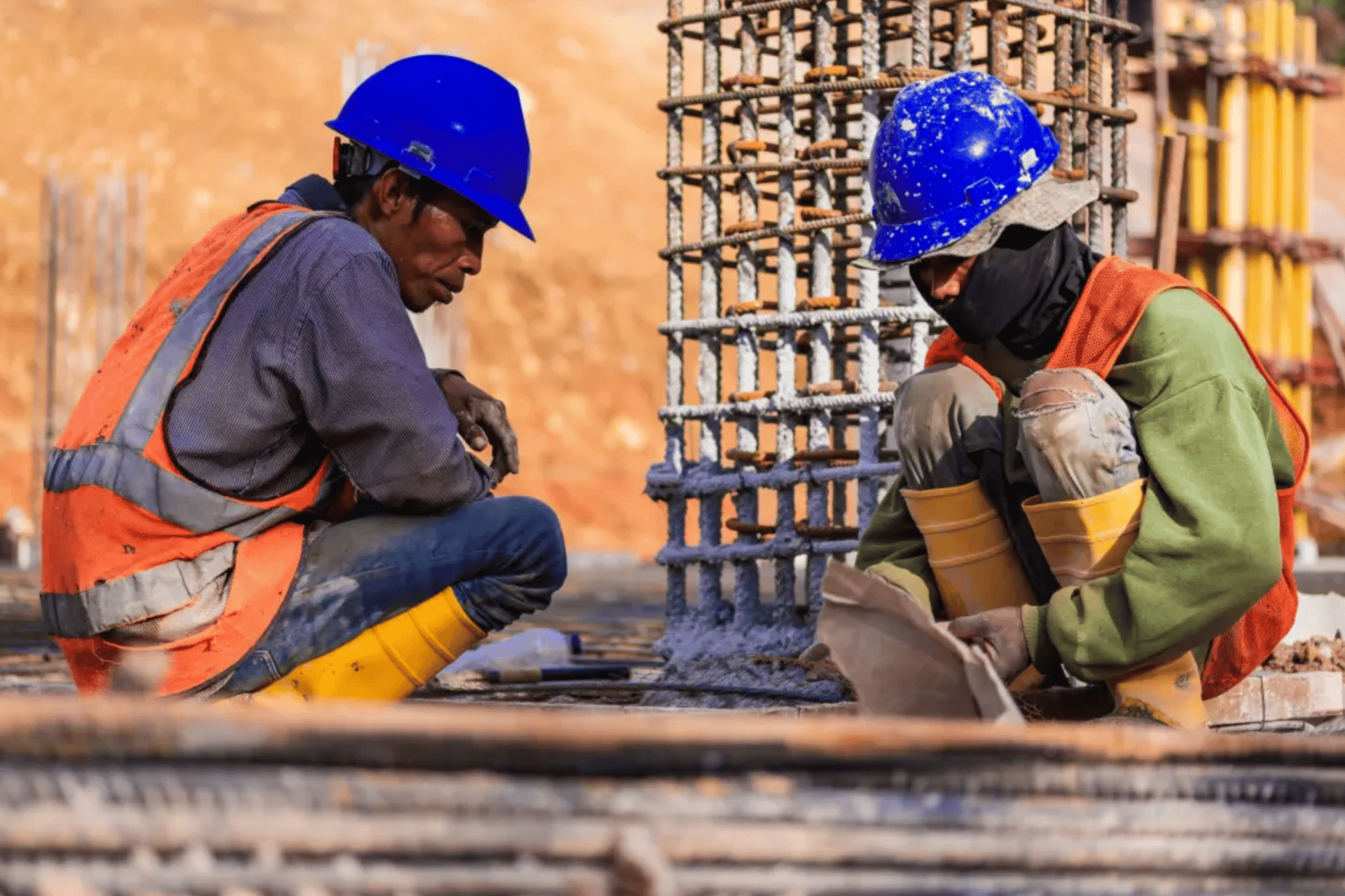- The Runway Ventures
- Posts
- 🤯 Inside Gravel: When Founder Conflicts Killed a $14 Million Dream
🤯 Inside Gravel: When Founder Conflicts Killed a $14 Million Dream
What happens when two co-CEOs can’t agree — and burn cash faster than they build. The untold story of Indonesia’s construction tech rocketship that imploded mid-flight.
Hey Founders,
Welcome to The Runway Ventures — a weekly newsletter where I deep dive into failed startup stories to help you become the top 1% founder by learning from their mistakes with actionable insights.
Today’s story is about how Gravel tried to build Indonesia’s future in construction but couldn’t make it due to founder misalignment. Let’s get to it! 🚀
Today at a Glance:
☠️ 1 Failed Startup → Gravel
⚠️ 2 Mistakes → Founder fallout & leadership meltdown
🧠 3 Lessons Learned → Founder alignment is everything
🔗 The Runway Insights → How Fluently hit $5M ARR with $0 ad spend
💰 Southeast Asia Funding Radar → Deel raises $300M at $17.3B valuation to help global businesses manage their international workforce
☠️ 1 Failed Startup: Gravel
🚀 The Rise of Gravel
🇮🇩 Founded in 2019 in Indonesia by 3 friends (Georgi Ferdwindra Putra, Fredy Yanto, and Nicholas Sutardja), Gravel was a digital platform to integrate and streamline the construction supply chain and workforce.
🕺🏻🕺🏻🕺🏻 Founders’ Story
Georgi, fresh out of U.C. Berkeley with a civil engineering degree, had seen firsthand how chaotic hiring construction labor could be.
👷🏻♂️👷🏻♂️👷🏻♂️ He’d been on job sites where hundreds of workers sat idle getting paid during pauses, only for the project to suddenly need a rush of extra hands that took weeks to recruit.
Georgi and his co-founders felt this pain and thought, “There has to be a better way!”
… and Gravel was born.
The Problem — 🏗️ In Indonesia’s construction ecosystem, labor sourcing was slow, informal, and inefficient. Many projects relied on personal networks, word-of-mouth, and hiring large groups from villages.
For example, during pauses in projects, workers might sit idle (yet still be paid).
At other times, projects would urgently need extra labor, but it would take weeks to assemble teams.
🚜 For developers — This meant delays in recruitment, leading to project delays and cost overruns.
👷🏻 For construction workers — They lacked stable, consistent job access, fair payments, and professional development opportunities.
The Solution — 🧱 Gravel digitally matched projects with workers quickly via smart algorithms (“Personalised Job Feed”), significantly reducing the time to find and assign appropriate labor.
First, the platform vetted workers (skills, assessments, training) to ensure reliability.
Then, it promised fast payments — paying workers within 24 hours after task completion, helping with cashflow resilience.
Gravel bundled labor, contracting, maintenance, and materials under one roof — thereby reducing fragmentation and simplifying what would otherwise require multiple vendors.
⚡️ In short, Gravel was like the “Uber for construction workers” — a tech platform to match construction projects with workers in minutes instead of weeks.
PS — Their Personalised Job Feed could match a project with workers in as fast as 1.5 minutes, instead of the usual 5–14 days of hunting via phone calls and word-of-mouth.
This one-stop approach — from labor to materials — was pretty innovative. The team even built an in-app chat feature called SalamChat to let customers, workers, architects, and suppliers communicate seamlessly on projects. |
🏔️ By 2023, Gravel’s hard work started paying off in a big way:
Hit 45x revenue growth between 2020 and 2022.
Onboarded 1.7 million workers.
Completed over 6,000 construction projects across 20 Indonesian provinces, including big projects like Jakarta’s LRT (Greater Jakarta Light Rail Transit), Jakarta International Stadium, Pelni Hospital, and the Keong Mas IMAX theatre.
Raised $14 million in funding led by New Enterprise Associates (NEA) and other top investors like Weili Dai (co-founder of Marvell Technology Group), Lip-Bu Tan (chairman of Walden International), East Ventures, and Sinar Mas Digital Ventures.
At this point, it felt like nothing could stop them.
🇮🇩🏗️ They were featured in lists of rising startups to watch, praised as a company “revolutionising” construction services, and hailed as an embodiment of Indonesia’s digital future in construction.
📉 The Fall of Gravel
🚧 Close Friends → Close Enemies 🚧
Most startups die of suicide, not murder. And that’s what happened to Gravel.
😡 By late 2023 — ironically around the time of that big funding — the co-founders were starting to clash over the company’s direction and management.
Behind the scenes, founder conflicts, cash flow chaos, and vanishing investor trust started to eat away at the company’s foundations. What began as Indonesia’s construction-tech success story quickly turned into a boardroom meltdown.
📌 Here’s what happened to Gravel:
👷🏻♂️👷🏻♂️👷🏻♂️ Build, build, build

2017 — Georgi Putra and Fredy Yanto began developing the concept of Gravel after witnessing inefficiencies in hiring construction labor (workers sitting idle or taking weeks to recruit).
💪🏻 They bootstrapped the project with personal funds and researched the market.
2019 — 📍 Gravel was officially founded in Jakarta, Indonesia, with Georgi, Fredy, and Nicholas Sutardja as co-founders.
The startup launched its mobile app to connect customers with skilled construction workers, aiming to revolutionise how construction services are sourced.
2020–2022 — 🔥 Experienced rapid growth.
The platform’s usage soared as it addressed a real need in the construction sector. Over this period, the company achieved 45× revenue growth.
It expanded its offerings to cover end-to-end construction needs (labor, contractors, maintenance, materials) and built a community of 1.7 million worker partners across Indonesia.
By 2022, Gravel had facilitated more than 6,000 projects in 20 provinces, including high-profile infrastructure and building projects.
🤑 According to an investment filing exemption made with US regulators, Gravel claimed to have more than $1 million in revenue in 2021.
Dec 2023 — 💰 Raised a $14 million funding round from top investors.
The round was led by NEA (marking NEA’s first investment in Southeast Asia) and joined by notable figures like Weili Dai, Lip-Bu Tan, as well as local VCs East Ventures and SMDV.
The news was covered by major tech media, and Gravel was lauded as a rising star in construction tech.
Founders announced plans for global expansion and enhanced technology development with this new capital.
🤺🤺🤺 Founders conflict…

Late 2023 – Early 2024 — 🚨 Shit happened.
Internal disputes among Gravel’s leadership intensified, especially between co-CEOs Georgi Putra and Fredy Yanto.
Differences in vision and management style created a rift.
🙏🏻 December 2023 saw a leadership change → the board and investors intervened due to the co-founders’ feud.
Georgi’s role began to diminish.
Aug 2024 — 👋🏻 Georgi Putra stepped down as CEO under investor pressure amid the ongoing internal conflict and financial strains.
🚢 Fredy Yanto remained to lead the company, while Nicholas Sutardja (chairman) and other stakeholders tried to steady the ship.
This leadership shake-up signalled serious trouble to observers and employees.
Oct 2024 — 🪓 With finances deteriorating, Gravel conducted a significant layoff, cutting approximately 35–40% of its staff to reduce operating costs.
The decision was announced in a tense town hall meeting, and employees were told the company’s losses force an efficiency move.
This downsizing left the team a fraction of its former size and further eroded morale.
Dec 2024 — 🚧 Gravel ceased operations entirely.
Unable to secure further funding or turn a profit, the company laid off all remaining employees and shut down.
By the first week of December, Gravel’s website was taken offline and the app was no longer functional.
Former staff reported that final salaries and severances were delayed or unpaid as the startup’s cash reserves were exhausted.
Gravel’s ambitious journey came to an abrupt end just 1 year after its big victory lap.
🤔 So what really killed Gravel?
It wasn't market conditions or lack of demand — Indonesia's construction industry was still booming. It wasn't even the tech winter that hit many startups.
⚠️ The real killer was founder misalignment and toxic internal conflicts.
I wonder how different it might have been if the founders had stayed on the same page and if they had paced their growth more sustainably.
At the end of the day, founder alignment is probably the most important factor that determines the success of a company.
Want to learn more about Gravel’s downfall?
⚠️ 2 Mistakes
Mistake 1: Founder fallout & leadership meltdown
Gravel’s core implosion wasn’t tech or market—it was people. Founders Georgi, Fredy, and Nicholas just couldn’t align when they hit their high-growth phase.
🤼♂️ This also doesn’t help when the company had 2 co-CEOs (Georgi + Fredy) and it introduced dual command.
Decision-making boundaries become blurry → Who owns hiring, product, operations, finance, investor relations?
That ambiguity is a breeding ground for internal friction, especially during scale.
🚨 Not just that, when conflict become visible, investors began to:
Demand changes (as they did by asking Georgi to step down).
Pull back or delay follow-on funding.
Pressure the leadership to pick sides or re-structure.
Once management trust fractures from the investor side, access to capital wears thin — and startups like Gravel, draining cash to scale operations, couldn’t survive long without fresh fuel.
Mistake 2: Raising big, but spending bigger
When Gravel secured that $14M round led by NEA, they hit what most founders call the “we’ve made it” moment.
Since it’s unclear if the $14M was deployed based on certain milestones (or lump sum), let’s assume there are 2 scenarios here:
1️⃣ Scenario 1 → $14M deployed as a lump sum
🚀 If Gravel received the full $14M at once, the team probably shifted from survival mode to expansion mode — fast.
Problem? The construction tech business model is low-margin and high-ops. Every project needs human coordination, offline verification, and follow-up. It’s not a SaaS model where $1 of code scales infinitely.
Gravel’s growth meant rising burn → training, logistics, worker payments, and material procurement.
When investor disputes erupted and follow-on funding froze, the company had no cushion. Payroll delays, layoffs, and a full shutdown followed — within a year of the big raise.
2️⃣ Scenario 2 → $14M disbursed as milestones
🤔 In this scenario, Gravel may have counted on future tranches that never arrived.
They probably planned hiring, marketing, and city expansion assuming the full $14M would come through. But when investor confidence dropped — due to internal conflict or missed targets — the later tranches were delayed or canceled.
The result?
The company had hired for future growth that never materialised.
Fixed costs (payroll, leases, marketing) were locked in.
But revenue and funding didn’t catch up.
They were spending tomorrow’s money today.
🚜 Regardless of either scenario, Gravel’s mistake was the same at its core — mistaking capital for cushion.
🧠 3 Lessons Learned
Lesson 1: Founder alignment is everything
Gravel’s downfall proves that founder misalignment can kill faster than bad economics.
Having two co-CEOs (Georgi and Fredy) may have sounded collaborative, but it created dual command.
Decisions got stuck in limbo.
🌮 Key Takeaways:
🤝🏻 Communicate like co-pilots (not competitors)
Do weekly founder syncs that focus only on alignment and long-term priorities — not firefighting.
If conflicts arise, address them privately and fast. Silence is poison.
Have hard conversations as early as possible.
🏊🏻 Define clear swim lanes early
Write down who owns what — even if it feels obvious today.
For example, one founder owns product and tech, the other owns sales and finance. Document this like you would a product spec.
A rule of thumb: “One neck to choke, one brain to trust.” No overlap in mission-critical functions.
🙏🏻 Schedule “founder therapy” like board meetings
1 session/month with a neutral third-party coach or licensed therapist who understands startup dynamics.
Not a venting session — but a structured review of alignment, personal bandwidth, and communication gaps.
If it’s awkward, start with a 3-month trial.
Lesson 2: Treat capital like ammunition (not oxygen)
Capital should amplify what already works — not subsidise what doesn’t.
Gravel’s $14M raise should’ve been fuel for controlled expansion — instead, it became the match that lit a burn-rate bonfire.
🌮 Key Takeaways:
🔥 Your burn rate is your real boss
Treat every raise as a countdown timer, not a trophy.
The moment your operating expenses depend on the next round, you’re not scaling — you’re surviving.
For example, in construction tech, companies like Infra.Market scaled profitably by optimising supply chains first — they made cash flow discipline sexy before expansion.
🧪 Stress-test your capital structure
Ask yourself: “If the next tranche never arrives, can I still operate for 12 months?”
Build contingency models:
Plan A: 100% funds arrive.
Plan B: Only 50%.
Plan C: Just the first tranche.
If your business can’t survive under Plan B, you’re not raising capital — you’re buying risk.
💵 Spend slow, validate fast
Before hiring 100 new people or entering 10 cities, prove one city’s profitability.
Track a simple “cash conversion score”: how much new burn turns into revenue within 90 days.
One tip would be to create a “red light metric” — when monthly burn exceeds 20% of your last quarter’s cash inflow, expansion freezes automatically until metrics improve.
Lesson 3: Build a business that can breathe without funding
🏄🏻♂️ Gravel rode investor hype like a wave — until the current stopped.
When capital was flowing, growth looked inevitable. But when investor trust evaporated after the founder fallout, Gravel suffocated. That’s what happens when your company’s oxygen tank is investor money instead of customer revenue.
🌮 Key Takeaways:
🤑 Prioritise profitable confidence (a concept shared by Sahil Lavingia — founder of Gumroad)
Don’t wait until post-Series A to think about profitability.
Spend less than you make.
Growth should match the pace your customers are willing to pay for. Also, consider raising money from your community and turning your customers into owners.
💰 Don’t chase investor signals (chase customer validation)
Investor hype ≠ product-market fit.
Make decisions based on customer data, not the last term sheet.
If an investor says, “You need to scale faster,” ask: “Can our customer retention handle that?”
Rule: Never let fundraising dictate your operating rhythm.
🏦 Make customer cash your real investor
Treat customer revenue as your seed round every month.
Prioritise payment terms, pre-orders, and subscription models to smooth cash flow.
The most dangerous phrase for a startup: “We’ll fix the economics after we scale.”
🔗 The Runway Insights
💰 Southeast Asia Funding Radar
Deel raises $300M at $17.3B valuation to help global businesses manage their international workforce (Link)
Mamame raises $2M to make more tempeh-based snacks (Link)
Ryder raises $3.2M to simplify and secure crypto storage (Link)
Hangry raises $10.5M to grow their virtual restaurants in Indonesia (Link)
🤝🏻 Before you go: Here are 2 ways I can help you
Founder Office Hours: Book a 1-1 call with me, share your problems and questions, and I'll help you cut through the noise, avoid costly mistakes, and get clear next steps that actually work. I help early-stage founders with:
Validating ideas & building MVPs
Tech & product development
GTM strategy & fundraising
Finding PMF & growth hacks
Growing & monetising newsletters
Attract customers & investors by building a solid founder brand on LinkedIn
Promote your business to 18,000+ founders: Acquire high-value leads and customers for your business by getting your brand in front of highly engaged startup founders and operators in Asia.
💃 Rate Today’s Edition
What'd you think of today's edition?Your feedback helps me create better content for you! |
That’s all for today
Thanks for reading. I hope you enjoyed today's issue. More than that, I hope you’ve learned some actionable tips to build and grow your business.
You can always write to me by simply replying to this newsletter and we can chat.
See you again next week.
- Admond
Disclaimer: The Runway Ventures content is for informational purposes only. Unless otherwise stated, any opinions expressed above belong solely to the author.






Reply